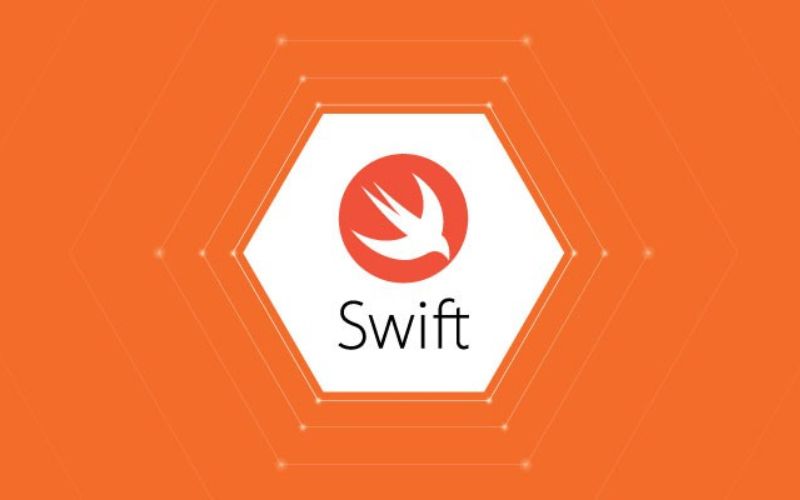It seems
that Apple's Swift programming language is all the rage these days in the tech
world, and for good reasons.
In addition,
it’s also becoming hotter while it stays cool, with many more developers using
the Open-Source Swift Libraries to build applications for various platforms and
many more looking forward to using it in the future.
With Swift,
programmers can create apps for iOS, OS X, watchOS, and television using this
programming language, which was created by Apple.
Swift has a
wide range of benefits, but one of the most high-profile benefits is the speed
at which you can develop complex apps when you learn them.
The good
news is that there are many resources available to help you get started when it
comes to creating your own apps - including open-source Swift libraries that
you can use to get started.

There is a
Swift Open Source directory available on GitHub that contains a selection of
libraries written in Swift.
We created
this directory so that people who were interested in using open-source Swift
libraries in their projects would have a useful place to turn when looking for
these libraries.
Aside from
combining some of the best aspects of object-oriented languages like Java, C++,
and Objective-C into Swift, it makes it easy for non-programmers to learn and
start using this language.
SnapKit
It is one of
the best Swift Libraries you will come across since it allows iOS developers to
dynamically change auto-layout constraints using elegant and shortcode.
A major
advantage is that this module reduces the layout logic to just a few lines of
code while still maintaining readability and comprehension, and the large iOS
community behind the open-source SnapKit project is a big plus as well.
With
SnapKit, you are able to mix both methods without having to worry about overly
complex or confusing code being written.
Alamofire
If you are
looking to abstract away and simplify the networking within your application,
then Alamofire is what you need.
As the name
implies, Alamofire is an HTTP networking library that was built on top of
NSURLSession and the Foundation URL Loading System.
It nicely
wraps networking mechanisms in a smooth and simple Swift interface that
provides a means of accessing them.
Firebase
The process
of learning how to develop back-end code (server) can be a difficult one for
Mobile Developers, and you might also find that you have to spend a lot of time
and increase your productivity as well.
The firebase
platform is a great alternative for backend support since it reduces the amount
of time spent coding backend functionality.
🔘 Read More: What are the Benefits of Hiring a Professional Web Design Company?
SwiftLint
There is no
need to worry about code smells anymore with SwiftLint. It's a library that
allows developers to debug and clean their source code in a convenient manner.
A Swift
codebase should adhere to a set of standards for syntax as well as best
practices approach to ensure that you maintain a high level of quality
throughout the entire codebase.
If your
codebase adheres to a set of strict guidelines for code writing, it will be
easier to maintain, extend and integrate your codebase.
In addition,
any newbie will be able to quickly integrate the codebase, conforming to the
standards the rest of the team sets.
SwiftyJSON
There are
explicit types in Swift that ensure that we don't make mistakes in our code and
that we don't create bugs as a result of them.
There is
nothing quite as tedious and time-consuming as dealing with JSON data,
especially when using Swift. Fortunately, SwiftyJSON is here to help us deal with
JSON data in Swift in a more readable manner. Optional unwrapping is also
handled for you automatically.

Kingfisher
Using
Kingfisher, you are able to download images from URLs and store them locally on
the device's memory and hard drive and access them during the application's sessions.
There is no
doubt that image caching is one of the most important performance elements of
an iOS app. By downloading images over the network only once, your app becomes
faster and more responsive, uses less data, and your users save money as a result.
This library
may greatly improve UX through its use of the special category API of
UIImageView, which even makes it possible for you to insert image placeholders
on the slide, as well as make it easy for you to benefit from the significant
speed advantages of UIImageView.
Realm
The use of
Core Data in Swift is a complex task. Truth be told, Core Data has a
complicated API that comes at a significant learning cost when it comes to
getting up to speed.
It is widely
believed that Core Data should be avoided, instead, other data management
systems should be used. Therein lies the reason why Realm is an excellent
alternative to Core Data.
In
comparison to Core Data, Realm gives you a superior persistent data management
solution for iOS app development. Realm aims to replace SQLite and CoreData
within iOS apps.
It should
not be forgotten that Realm has a number of advantages over these older
databases and storage systems, including ease of use, better query performance,
and a more intuitive and straightforward way of administering data.
The Realm
framework is becoming increasingly popular since it offers a number of benefits
in addition to being free and open source. Realm is simple to learn for iOS
developers due to the well-written documentation.
Moya
This library
covers a wide range of network-related concerns while working together with
Alamofire. Moya is an abstract class that sits at the top of the networking
layer so that programmers can manage it.
Moya makes
connecting to APIs fast and easy, and with extensions like RxSwift and
ModelMapper, it is such an easy process. However, due to the fact that Moya
isn’t well known in the developer community, it should only be used when you know
sure what you’re doing.

Vapor
It is the
perfect library for you if you want to learn backend programming but don't want
to learn a new language at the same time.
As an iOS
developer, you probably know that Vapor is a tool that helps you develop
server-side backend programming in Swift. The syntax for Vapor is simple, so it
is easy for you to learn it and practice it rapidly.
The reason
it has become so popular is its simplicity and a high degree of familiarity
since it is built on Swift and Xcode.
Furthermore,
the Vapor community is exceptionally positive and large, so it is just a matter
of time before it becomes a household name.
It is easy
to use Vapor's API thanks to the fact that it has its own Swift parser,
eliminating the need for any third-party dependencies at aller.
It is through
this mechanism that Vapor developers are able to maintain the constant
simplicity, readability, and Swift compliance of their APIs.
🔘 Read More: 11 Best Web Development Frameworks to Use
RxSwift
Similarly,
RxSwift and RxCocoa are two examples of Functional Reactive Programming (also
called "ReactiveX" or "Rx"), which can be utilized in a
variety of languages and platforms, respective platforms.
There is a
main feature of this framework to be mentioned here, and that is that it allows
us to continuously monitor and listen to asynchronous actions in the form of
streamed events and data.
In current
times, the MVVM pattern is the prevailing programming pattern on iOS. The most
significant difference between the MVVM pattern and the MVP pattern is the way
data is bound and managed. Therefore, RxSwift is an excellent library to use
for this purpose this (MVVM architecture).
As well as
RxSwift, you might have used RxCocoa at some point in your life. If you’ve used
RxSwift, you have probably also used RxCocoa.
Charts
This
wonderful and free open-source Swift library provides the ability to visualize
data. Since showing and analyzing data in tables or collection views is
time-consuming and limiting, Charts make a wonderful alternative to this time.
There are a
number of charts you can use to enhance the aesthetics and usability of your
mobile app.

ObjectMapper
Having ever
written an app that downloaded information from an API, when you had to map the
response to your objects, you had probably spent a lot of time writing code to
map the response back to the API calls.
With the
ObjectMapper, you are able to convert a JSON response into a model object and
vice versa, in other words, you are able to map JSON to an object, and objects
back to JSON as well. Nested objects are also supported by this extension.
Quick
With Quick,
you get a behavior-driven test-based development framework influenced by RSpec,
Specta, and Ginkgo, as well as Nimble, a matcher framework, to ease the process
of writing your tests.
Conclusion
If you are
looking for the best swift framework, we have mentioned some of the best
options you may consider.
But if you
are a business owner and you are looking to boost your business, we recommend
you consider our team.
Our team
includes some of the best specialists in web, desktop, iOS, and android app
development.
Thus, if you
are willing to stand out among your competitors, do not hesitate and take a
look at our website to see if there is anything we can help you with.